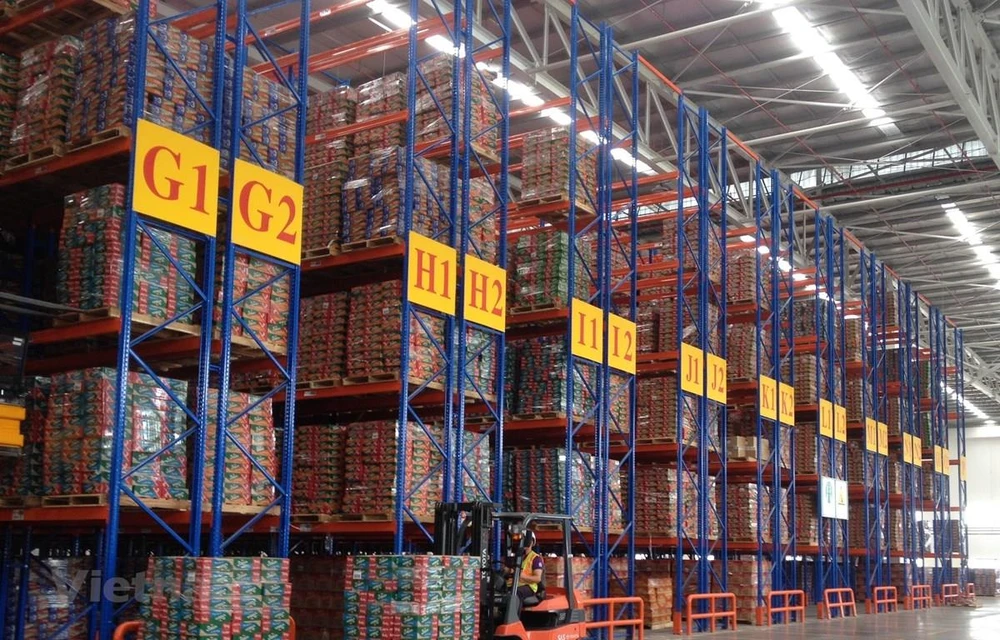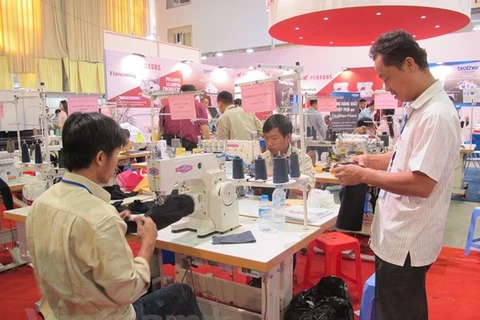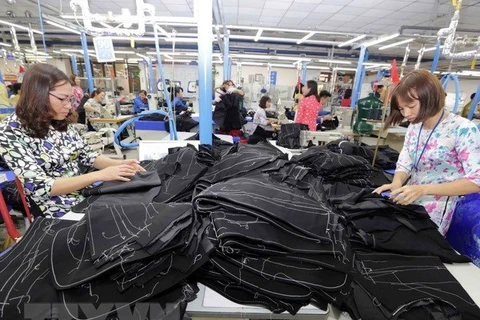
Hanoi (VNA) – The labour productivity gap between Vietnam and other countries in the region continues to expand and the economy will face huge challenges to catch up with regional countries in the time ahead.
“Over the past time, although Vietnam has made efforts to implement reforms, several institutional barriers are affecting the transformation into the market-oriented economy, economic restructuring and growth model renovation,” said Nguyen Bich Lam, Director General of the General Statistics Office (GSO) of Vietnam, at a conference on improving national labour productivity held in Hanoi on August 7.
Vietnam’s labour productivity is equal to 7.3 percent of Singapore’s
According to the GSO, in 2018, the country’s economic growth reached 7.08 percent and labour productivity of the economy was 102.2 million VND (4,521 USD) per labourer, up 6 percent against the previous year.
The average labour productivity increased 5.77 percent per year in the 2016-2018 period and was higher than the average level of 4.35 percent per year in 2011-2015. In general, the labour productivity in the period of 2011-2018 rose 4.88 percent per year on average.
[Seminar discusses labour productivity-competitiveness ties]
In terms of purchasing power parity (PPP), Vietnam's labour productivity is very low compared to other countries in the region. In 2018, Vietnam's labour productivity reached 11,142 USD, equivalent to 7.3 percent of Singapore's, 19 percent of Malaysia’s, 37 percent of Thailand’s, 44.8 percent of Indonesia’s and 55.9 percent of the Philippines’.
Therefore, Lam warned that “the absolute gap continues to increase and the Vietnamese economy will face huge challenges to catch up with labour productivity levels of other countries in the time to come."
Economy scale is too small
The GSO leader pointed out that the absolute gap in labour productivity value between Vietnam and other countries in the region cannot be narrowed as the country has a low starting point and its economic scale is too small.
Besides, the size of Vietnamese businesses is also small, with the number of medium, small and micro enterprises accounting for about 98 percent of the country’s total. Furthermore, most domestic enterprises have limited financial potential and technological investment, weak production management experience and low competitiveness.
One of the other issues mentioned Lam is that the process of economic restructuring takes place very slowly, when the industry, services, finance, banking, tourism sectors, which serve as locomotives of the economy, make up a low proportion.
In addition, he emphasised that the processing - manufacturing industry, despite leading labour productivity growth, still focuses on manufacturing products for export with low and medium technology backgrounds.
 The conference on improving national labour productivity held in Hanoi on August 7 (Photo: Vietnamplus)
The conference on improving national labour productivity held in Hanoi on August 7 (Photo: Vietnamplus)
Low quality of human resources
According to the GSO report, the quality of labour force in Vietnam is very limited, with a low rate of trained workers, not to mention an unreasonable training structure that leads to a shortage of skilled workers. The reason for that situation is the gap between vocational education and labour market needs.
Recently, the labour structure transfer in the country has taken place quickly, but the agriculture-forestry-fishery sector still boasts a large number of workers who are mainly manual and seasonal ones. Therefore, low added value has created low labour productivity.
As of 2018, Vietnam had 20.5 million workers working in the agriculture-forestry-fishery sector, with labour productivity reaching only 39.8 million VND per labourer, equal to 38.9 percent of the general labour productivity level of the economy.
In addition, the business sector shows quite backward technological level and firms’ participation in innovation-related activities remains limited. According to a World Bank report in 2015, Vietnam had only 15.7 percent of businesses spending on research and development activities.
The correlation between labour productivity and growth
At the conference, Nguyen Chi Dung, Minister of Planning and Investment, said that increasing labour productivity is a "key" solution to successfully implementing the national strategic goals in the next 10 years, with a vision toward 2045.
According to the minister, Vietnam needs to pay special attention to the reciprocal relationship between labour productivity and GDP growth, which means that high productivity will lead to high GDP growth and vice versa.
“Increasing labour productivity must be closely linked to the process of restructuring the economy, renewing the growth model, and improving the competitiveness and resilience of the economy, he said.
He stressed the need to early establish a National Productivity Committee which is responsible for coordinating resources to increase national labour productivity and urgently develop a National Strategy on improving national labour productivity with general and specific goals in each period with a view to bringing Vietnam’s labour productivity on par with those of other countries in the region./.

























